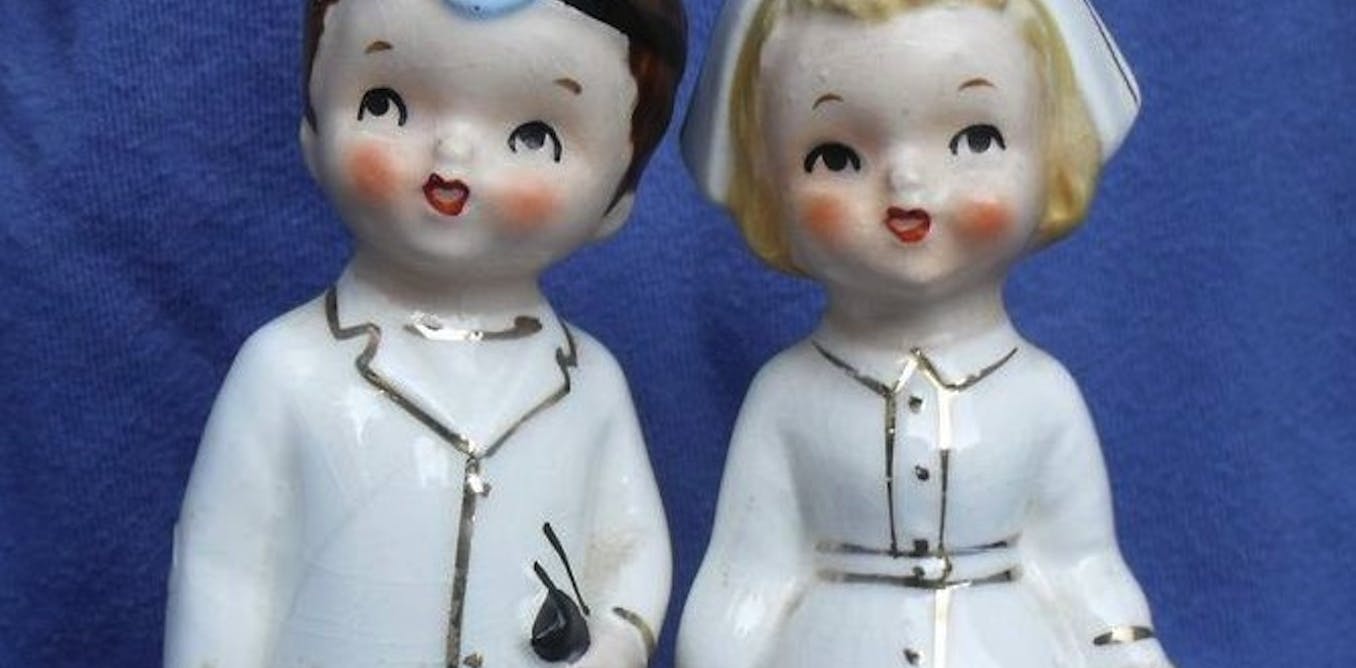
Equal but not the same: why we need to rethink how doctors and nurses work
- Select a language for the TTS:
- UK English Female
- UK English Male
- US English Female
- US English Male
- Australian Female
- Australian Male
- Language selected: (auto detect) - EN
Play all audios:

Doctors and nurses appear to work harmoniously together but this apparently serene state of affairs is actually hiding inequality. Instead of giving nurses the room to shine in their
workplace, the traditional role of the doctor as the dominant professional means nurses face both structural and professional inequalities. But a major change is occurring in Australian
health care: if you pay a visit to your local doctor, there’s a good chance you’ll spend some time with a nurse. Nurses in general practice provide specialist health services, education and
advocacy. For patients with long-term health complaints, having a nurse involved in care can improve health outcomes. Nurse-led clinics for people with coronary heart disease, for instance,
have increased patient participation in continuing care and encouraged lifestyle changes. In Australia, the number of nurses employed in general practice increased by 260% between 2003 and
2008. By 2009, it was estimated that 8914 nurses worked in general practice. This growth doesn’t appear to be slowing. If anything, it’s speeding up and this is no accident. QUIET REVOLUTION
Successive federal governments have and continue to encourage the employment of nurses in general practice (practice nurses), as one part of a wider strategy to address concerns about
changes in the population. As the population ages, more people will experience long-term health complaints and more people will have more than one health problem. By increasing the number of
nurses in general practice, it’s hoped these growing ranks of patients will be able to have their health-care needs met quickly and appropriately. For patients, this raises questions about
how they will experience a visit to their general practice. Nurses and doctors, meanwhile, are asking how they can work together to provide the best possible health care. Nurses who enter
the workforce today are prepared for clinical independence, critical thinking, and professionalism. No longer do they view themselves as doctors’“handmaidens”. Nor are nurses substitute
doctors in general practice – they meet the needs of patients by approaching problems in a different way. They seek to understand how a person is experiencing both their health and their
illness so the nurse acts as an advocate for the patient. BETTER HEATH CARE The general practitioner has traditionally been the sole custodian of care but as the number of nurses in general
practice increases, it’s likely that this traditional role will be challenged. Doctors and nurses working together can deliver comprehensive primary health care. In fact, evidence suggests
when nurses and doctors work as equal partners, patients have better health outcomes and the health system saves money. But the majority of nursing activities in general practice in
Australia are only funded if a nurse is supervised and works on behalf of a general practitioner. This may not be the best way of helping nurses and doctors to work in partnership. Evidence
suggests that for some health problems, nurses can achieve equivalent health-care outcomes to care by doctors but there remains a need for more research on the efficacy of nurse-led
services. In Australia, general practices operate as businesses and need to make money, so nurses cannot be a financial loss to a practice. And the medical profession doesn’t have incentives
to support the nursing profession to have independent access to Medicare funding unless those services are provided on behalf of the general practitioner. Where nurses undertake
consultation in tandem or on behalf of general practitioners, there’s potential for more patients to be seen, and increasing the number of patient consultations would increase the revenue of
the practice. But allowing the nursing profession to access Medicare funding independently of the medical profession may be perceived as eroding the potential income of general
practitioners. Such perceptions are problematic because if the nursing profession is denied opportunities to contribute to patient care because of real or perceived economic factors
favouring doctors, it may result in distrust between the professions. And such distrust is likely to hinder the development of equal and collaborative working relationships. ADVOCATING FOR
THEMSELVES It’s important for the nursing profession to demonstrate that it can deliver cost-effective healthcare. Nurses must also show that they are accountable for the services they
provide. Current research suggests that nurses in general practice may influence medical decision making as a way of getting around limitations to their role. If this is the case, it calls
into question the openness and transparency of nursing roles in general practice. And openness and transparency about the relative contributions to health care by both nurses and doctors
will greatly enhance the trust of the public. While the onus remains on the nursing profession to demonstrate their value in general practice the support of the medical profession will go a
long way to building collegial relationships. Collaborative partnerships between nurses and doctors in general practice will result in comprehensive primary health care – the beneficiaries
will be patients and the community. Increasing the number of nurses in general practice has the potential to improve Australian primary health care services, but this is only part of the
solution. Policy makers must also look at ways to support nurses and doctors to work together. The future for nursing in general practice is bright. It will be even brighter when nurses and
doctors become equal partners.
